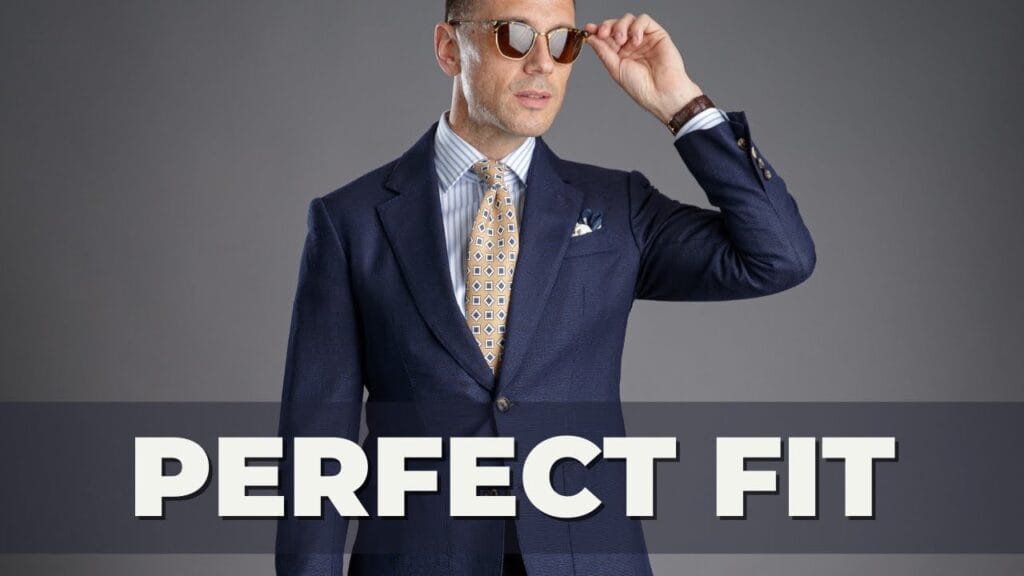Here’s a fact: if your clothing doesn’t fit properly, you’re not going to look as good as you want to. So in this video, we’re covering …
source
The Ultimate Clothing Fit Guide: From Suits to Shirts, Pant Breaks to Tie Length
Achieving the perfect fit in men’s clothing can transform your appearance and boost your confidence. Whether you’re dressing for a work event, a wedding, or a casual outing, understanding how garments should fit is crucial. In this guide, we’ll cover the essential aspects of clothing fit: suits, shirts, pant breaks, and tie length.
1. The Perfect Suit Fit
Jacket Fit
- Shoulders: The suit jacket should sit comfortably on your shoulders without any pulling or sagging. The seam should end at the edge of your shoulder.
- Chest: Button the jacket and ensure there’s enough room to slide your hand between your body and the fabric—about a fist’s width is ideal.
- Waist: The jacket should taper slightly at the waist, creating a V-shape that enhances your silhouette.
- Length: The jacket’s bottom hem should cover your rear and hit around the mid-crotch or just slightly below.
Sleeves
- Length: Ideally, your jacket sleeves should end just above the wrist bone, allowing about half an inch of your shirt cuff to show.
Pants Fit
- Waist: Pants should fit snugly at the waist without being too tight—use a belt if needed.
- Seat: Ensure the fabric hugs your backside without being tight.
- Inseam: The pant length should allow just a small break (more on this below), while still using a comfortable fit for mobility.
2. Shirt Fit
Neck
- Ensure you can comfortably fit a finger between your collar and neck. If the collar is too tight, you’ll feel restrained.
Shoulders
- Similar to the suit, shoulder seams should align with your shoulders and not extend past them for a polished look.
Body
- The body of the shirt should fit comfortably without excess fabric. You should be able to pinch about 1-2 inches of fabric on either side at the waist.
Sleeve Length
- When standing, the cuffs should end right at the wrist, allowing the sleeves to peek out slightly when worn under a jacket.
3. Understanding Pant Breaks
The break of your pants refers to how the fabric folds at the hem when it meets your shoes. There are three primary styles:
1. No Break
- The hem of your trousers rests slightly above the top of your shoes. This style is modern and gives a sleek appearance.
2. Half Break
- There’s a slight fold at the front of the pant leg where it meets the shoe. This is the most versatile style, striking a balance between contemporary and classic fits.
3. Full Break
- The pants meet the shoe with a noticeable fold. It’s more traditional, primarily suited for formal settings or relaxed styles.
Choosing the right break largely depends on your personal aesthetic, the occasion, and the overall look you wish to achieve.
4. Tie Length
With tie length, the rule of thumb is that the tip of your tie should reach your belt buckle. Here’s how to ensure your tie hangs just right:
Width
- A standard tie width is about 3 to 3.5 inches, which works for most body types. Thinner ties can lend a modern vibe, while wider ties exude a classic feel.
Knot Style
- Different knots produce different lengths. A wider knot like the Windsor will require more length than a simple four-in-hand knot.
Adjustment
- When tying your tie, ensure to adjust it so that it lays flat against your collar and the lengths match up with your waistband.
Conclusion
The right fit in clothing can elevate your style and create a polished appearance. By understanding the nuances of suit jackets, shirts, pant breaks, and tie lengths, you can ensure that you look your best whatever the occasion. Remember, investing in a good tailor can also make a significant difference, helping you achieve that perfect fit!


